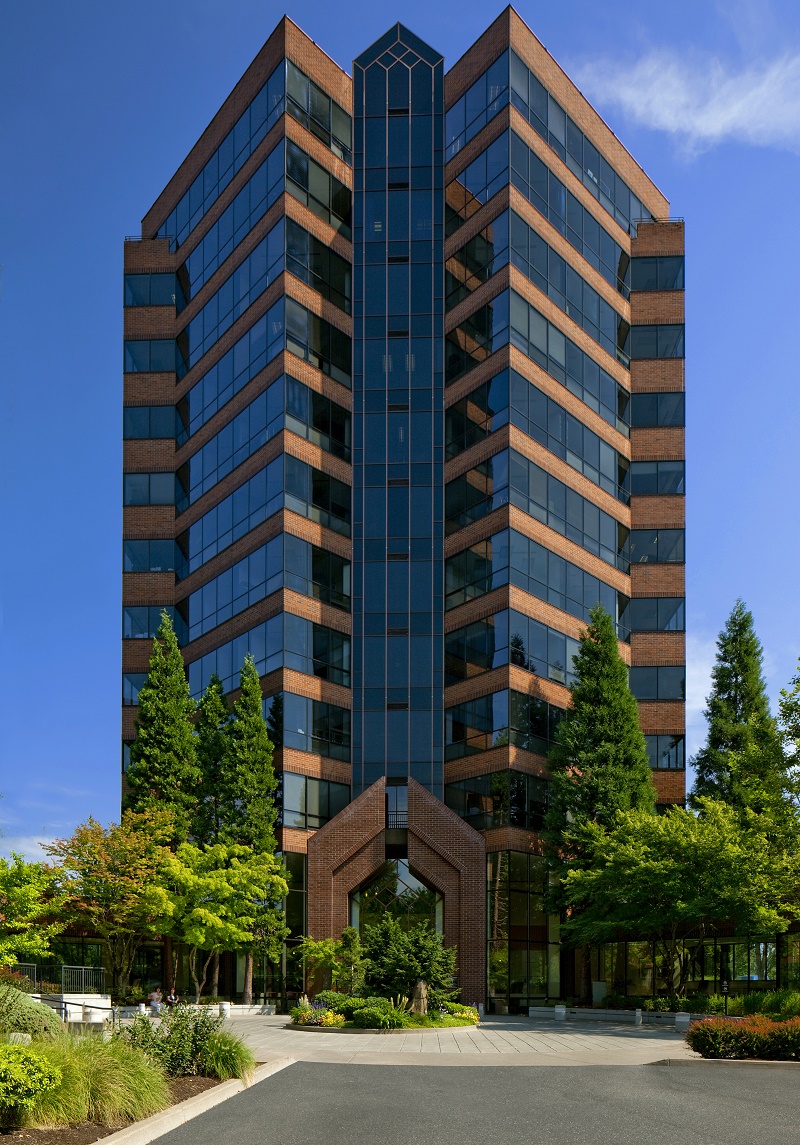New LEED Version to Spur Green Building
How USGBC's new iteration of its LEED certifiaction program will raise the bar on increasing energy efficiency.
By Gail Kalinoski

Shorenstein’s Lincoln Center Tower in Portland, Ore., used the LEED Dynamic Plaque building and monitoring scoring platform, and went from LEED Silver to Gold.
Green energy continues to advance, with a major milestone set for Nov. 1. That’s when the U.S. Green Building Council unveils its new version of the 16-year-old Leadership in Energy and Environmental Design certification program that created an international standard for sustainable buildings and communities. The new version raises the bar on increasing energy efficiency and covers more sectors, like data centers.
The new version of the LEED certification program, v4, becomes the primary version and “pushes the green building industry forward in a way that no previous iteration of LEED ever has,” said Corey Enck, vice president of LEED technical development at the USGBC.
Since it was unveiled in 2000, LEED has become an international standard, certifying hundreds of thousands of square feet per day. As of July, more than 80,100 total commercial and LEED ND (neighborhood development) projects have been certified.
The USGBC worked with more than 100 projects to test LEED v4 in a beta program. Currently, there are more than 110 LEED v4-certified projects, representing a range of building and space types.
LEED v4 is placing more emphasis on energy optimization. Enck said the projects must now be at least 14 percent more energy efficient than the previous version, and 20 percent of all points will be centered on energy efficiency. Projects must also have an Energy Star score of at least 75, up from 69, he said, referring to the Environmental Protection Agency-backed rating system that promotes energy efficiency and uses an interactive tool to track buildings’ energy, water and, most recently, waste consumption.
“It’s a lot more aggressive in terms of level of performance that is required. It is a higher bar to get over,” said Jaxon Love, sustainability program manager for the property management and construction division of Shorenstein Realty Services.
LEED v4 will also address 21 different market sector adaptations, like new and existing data centers.
“Data centers have vastly different building needs compared to traditional office spaces,” Enck said. “A data center must provide massive cooling power for its servers, which can use as much energy as a small town.”
Love said Shorenstein piloted the LEED Dynamic Plaque building performance and monitoring scoring platform at Lincoln Center Tower in Portland, becoming the first Shorenstein property to use the program. It went from LEED Silver to Gold. The score reflects performance across five categories, including energy. Established in 2014, LEED Dynamic Plaque allows members to monitor their buildings’ performance in real time and make adjustments to meet their sustainability goals.
Shorenstein, an owner and manager of office properties, is a member of the Department of Energy’s Better Buildings Challenge, which focuses on reducing energy use 20 percent by 2020 and sharing energy efficiency best practices. The company has already reduced energy use by 19.5 percent and cut carbon emissions by 19 percent. Shorenstein has 35 LEED-certified buildings and 52 Energy Star-certified buildings. It’s ranked second among 23 U.S. office portfolios on the Global Real Estate Sustainability Benchmark, an international industry sustainability assessment, and earned the GRESB “Green Star” designation twice.
One of its LEED Gold properties, 33 S. Sixth in Minneapolis, earned a 98 out of 100 Energy Star score. In August, The Russ Building, constructed in 1927 in San Francisco, received a LEED Platinum designation.
“Older buildings can perform at the same high level as new buildings, and in some cases, an even higher level,” Love said. “It’s really a matter of keeping the building systems up to date, continuing to invest over time and having a team that is well trained, motivated and really competent at operations.”
New Star

The Russ Building, Shorenstein’s historic 31-story office tower in San Francisco, earned LEED Gold Certification.
And the LEED program isn’t the only one seeing change. The EPA will soon be launching Tenant Star, which jumps off its popular Energy Star program and will provide recognition for energy-efficient design and construction and efficient operation of tenant spaces.
“It’s still in a very nascent stage,” Love said, adding that it could be a few years before tenants can pursue certification. But it will likely be appreciated.
“More occupiers are looking into energy costs these days. Our occupier clients, and even Cushman & Wakefield (itself), track our carbon footprints, and with that comes a lot more sophistication in how we look at energy consumption and energy costs,” said Eric Duchon, director of sustainability strategies at Cushman & Wakefield and chair of Building Owners and Managers Association International’s Energy and Environment Committee.
Duchon said building owners and managers need to be asking, “What can I do to ensure that I’m not only maintaining the energy efficiency that I’m operating at but improving it?”
One concern that affects tenants is submetering, said Duchon, who also chairs the commercial real estate steering committee with the Department of Energy’s Better Buildings Alliance. The committee is developing a map of how submetering is treated across the country.
“It’s not a new concept, but I think something that is becoming more of a common approach to how large occupiers pay for their energy in their lease spaces,” he added.
Of course, there are other options for property owners that can’t or don’t want to seek LEED certification. “Early on, we recognized the value that Energy Star and LEED could bring in terms of ratings systems. It’s good to have competition and to keep the market for building performance designations open and competitive,” Love said. “We find there is value in the certification, particularly the transparency to the market.”
Industry groups like the Institute of Real Estate Management and BOMA International offer property assessment and certification programs, including the IREM Certified Sustainable Property program and BOMA 360 Performance Program.
BOMA 360 works in tandem with other tools and rating systems and requires benchmarking through the Energy Star Portfolio Manager. It is an overall look at how a property is managed, with energy and sustainability as two of six categories. More than 1,400 BOMA 360 designations have been awarded since 2009.
BOMA International research found that following both BOMA 360 and LEED can provide a boost, including higher rents, but even those with only BOMA 360 report increased tenant satisfaction.
Todd Feist, IREM sustainability program manager, likewise sees room for both IREM’s certification program and LEED.
“(IREM) is filling a need for those other properties where LEED just isn’t in the cards,” he said. “It has its place, certainly, in the markets. And in some markets you can’t be Class A without having a LEED certification.”
Feist said the IREM certification—which has different requirements for office, multifamily and retail—is “meant to be done by the site staff. It’s designed that people at the property level can do it.”
Feist said IREM has issued about 20 IREM Certified Sustainable Property certifications so far and has more than 100 applicants working toward the certification, including portfolios.
“We’re pretty happy with the first year of this program’s existence, and we understand it’s going to take some time for properties to work through the certification process, as it should,” he said.
Angela Aeschliman, COO of Watermark Property Management Co. in Chicago and an IREM member, notes that some of her firm’s clients are retail and small offices that couldn’t achieve a LEED certification but are looking for ways to control their energy costs. Properties of a certain size that are located in Chicago—like many U.S. cities—are required to provide benchmarking sustainability data to the city. At the very least, owners would use a program like Energy Star but might also seek a sustainability certification through an organization like IREM, she said.
“Everyone is contributing in ways that are really meaningful (and) that I think are reaching or attempting to reach the whole marketplace,” Love observed.
Originally appearing in the October 2016 issue of CPE, the Energy Issue.









You must be logged in to post a comment.